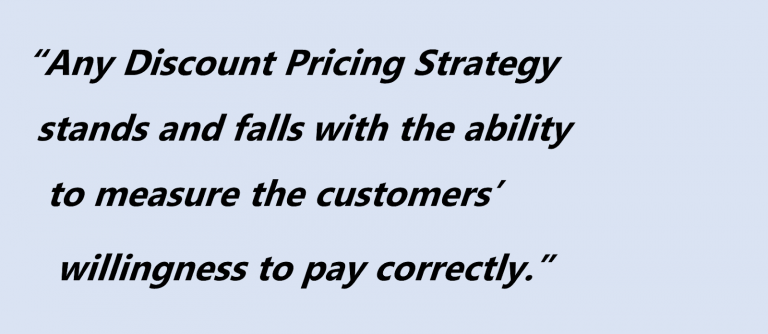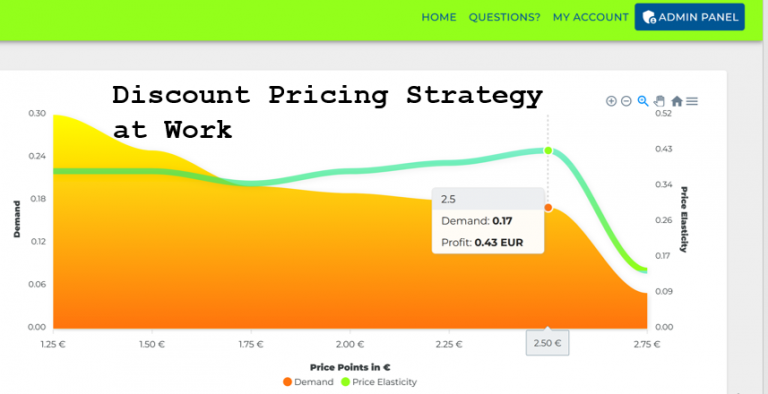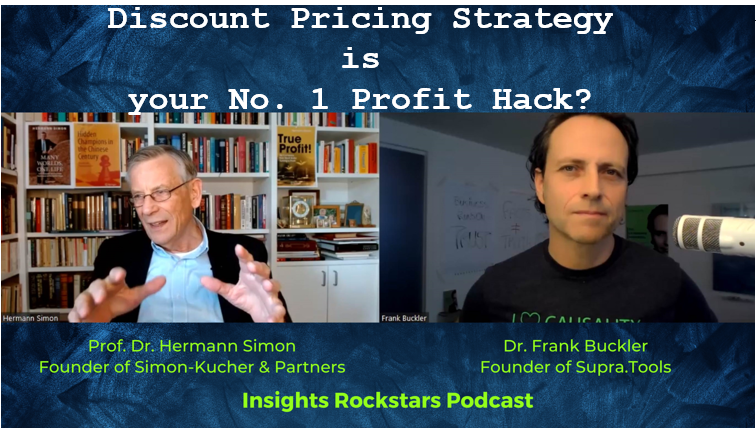
Are you worried because your profit margin is getting low day by day, all because of decreased sales? Then now is the time to say goodbye to all your worries just by adopting one of the best pricing strategies for your business, i.e., Discount pricing strategies.
In today’s era, we think if you want to optimize your profit margins and get a healthy turnover, then you have to apply these tricks and measures. But wait never heard about discount pricing strategies or their effects on a business? Still, no need to worry because we have got you covered. Here in the following lines, we will discuss everything about discount pricing strategies along with their pros and cons.
So, keep on reading and make this daunting task of selecting and applying discount pricing strategies for your business just in an eye wink. Let the real game begin immediately.

Discount pricing is one of the most popular pricing strategies used by top retailers and business owners. This strategy usually offers a lower price for a product to increase sales and attract more customers. As a result of this businesses will get a good turnover.
But if you want guaranteed results, you have to ensure that you are opting for the right pricing strategy for your business. Let’s see what the different types of discount pricing strategies are. After that, you can choose from those types depending upon the types of your products and services and business goals.
Different discount pricing strategies exist, so choosing the right one for your business is essential.
The most common types of discount pricing strategies are:
1. Percentage-based discounts
2. Cash discounts
3. Quantity discounts
4. Bundling discounts
5. Seasonal discounts
Percentage-based discounts are the most common and straightforward type of discount. They are simple to understand and easy to calculate. Commonly this type of discount is used for clearance items or seasonal sales. For example, a store might offer a 20% discount on all winter clothing. Also, if someone offers a 10% discount, then every $100 spent will be discounted by $10.
Cash discounts are less common but can be more effective in some situations. With a cash discount, you simply offer a fixed amount of the purchase price. For example, you could offer a $5 discount on all purchases over $50.
Quantity discounts are common in businesses that sell products in bulk quantities. The more units purchased, the higher the overall discount with a quantity discount. For example, you could offer a 5% discount on 10 units or more purchases.
Bundling discounts involve bundling together multiple products or services into a single package. This is a great way to encourage customers to buy more than one item at a time. For example, you could offer a 10% discount when customers purchase two or more items from your store.
Seasonal discounts are offered at specific times of the year when demand is typically high. For example, many retailers offer seasonal discounts during the holiday shopping season. Seasonal discounts can also be used to clear out inventory that is no longer needed.
Some professionals prefer to access video tutorials around pricing and insights

If you really want to get promising and positive results with your pricing strategy, then going for the best and most attractive ways is necessary. While keeping this point in mind, here are some ways you can consider implementing discount pricing strategies.
Steps to implement discount pricing strategy in your business
Discount pricing is a great way to increase sales and encourage customers to buy more. However, it’s important to ensure that you implement your discount pricing strategy correctly, or you could end up losing money. Here are four steps to help you successfully implement a discount pricing strategy:
1. Define your goals.
Before you start offering discounts, it’s important to know what you’re hoping to achieve. Are you looking to increase sales, encourage customers to buy in bulk, or do something else? Once you know your goal, you can tailor your discounts accordingly.
2. Choose the right products.
Not every product is a good candidate for discounts. In general, it’s best to offer discounts on items that have a high margin so you don’t lose money on the deal. You should also avoid discounting items that are already selling well, as this could cannibalize your profits.
3. Set the right price.
It’s important to strike a balance when setting your discounted price. If the discount is too small, it may not be effective in achieving your goals. On the other hand, if the discount is too large, you could end up losing money on the deal.
4. Promote your discounts effectively.
Once you’ve set up your discount pricing strategy, it’s important to let your customers know about it. The best way to do this is to promote your discounts through marketing channels like email, social media, and your website.
Pros and cons of discount pricing strategies
No matter what the case is, the pros and cons go hand in hand. The same is the case here, so let’s see the advantages and disadvantages of discount pricing strategies.

Advantages of Discount Pricing strategies
Today pioneers use the latest pricing survey tools that use Neuroscience + AI
Interested professionals can use some tools even for free and explore on its own
You can access supra tools free here.

Disadvantages of Discount pricing strategies
No doubt there are uncountable advantages of a discount pricing strategy, but there are also some potential drawbacks to using discounts as a pricing strategy. Let’s have a quick look at them,

By now, you must have got an idea of what actually discount pricing strategy is. Overall, there are five main types of discount pricing strategies: percentage discounts, cash discounts, quantity discounts, and bundled discounts. Each type of discount has its own advantages and disadvantages, so it is important to choose the right discount strategy for your business. You can use discount pricing to boost your sales and profits by carefully considering the goals and the nature of your products and services.
So, suppose you decide to implement a discount pricing strategy. In that case, it’s worthwhile to remember that no pricing will work without a valid understanding of the willingness to pay off your customers. Hope you have got our point and are ready to get started.
In my email newsletter “Pricing Insights” I cover the whole range of pricing insights solutions-from Garbor Granger to Conjoint, from NeuroPricing to Pricing Software Systems. I describe the application in various fields from new product pricing to promotion, from brand premium to feature pricing.
Keep up to date here.